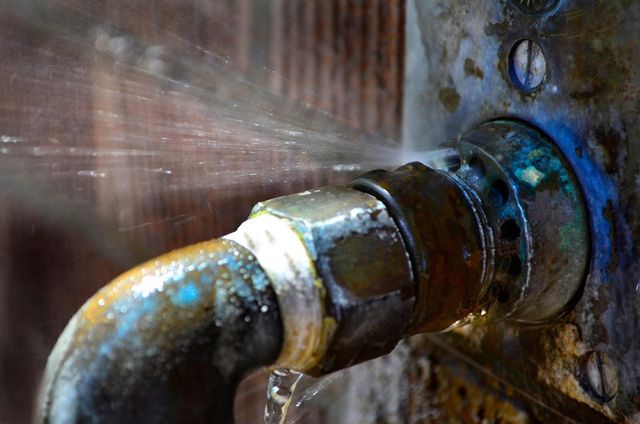6 Ways to Find Hidden Water Leaks in Your Home
6 Ways to Find Hidden Water Leaks in Your Home
Blog Article
Almost everyone will have his or her own way of thinking involving Detecting hidden plumbing leaks.

Early detection of leaking water lines can minimize a prospective catastrophe. Some tiny water leakages may not be noticeable.
1. Analyze the Water Meter
Every house has a water meter. Examining it is a guaranteed way that aids you discover leaks. For starters, shut off all the water sources. Ensure nobody will certainly flush, make use of the faucet, shower, run the washing equipment or dish washer. From there, go to the meter as well as watch if it will certainly change. Because no person is using it, there should be no activities. If it relocates, that indicates a fast-moving leakage. If you discover no changes, wait an hour or 2 as well as inspect back again. This indicates you may have a sluggish leak that can even be below ground.
2. Examine Water Intake
Evaluate your water bills and also track your water intake. As the one paying it, you should observe if there are any discrepancies. If you detect sudden changes, despite your consumption being the same, it suggests that you have leaks in your plumbing system. Bear in mind, your water bill need to fall under the very same variety monthly. A sudden spike in your costs suggests a fast-moving leak.
A steady boost every month, also with the exact same practices, shows you have a slow-moving leak that's likewise gradually intensifying. Call a plumber to thoroughly inspect your building, particularly if you really feel a warm area on your flooring with piping beneath.
3. Do a Food Coloring Examination
When it comes to water intake, 30% comes from commodes. If the shade in some way infiltrates your dish throughout that time without flushing, there's a leak between the storage tank and also bowl.
4. Asses Outside Lines
Do not forget to inspect your outside water lines also. Needs to water permeate out of the link, you have a loosened rubber gasket. One small leak can squander bunches of water and also surge your water expense.
5. Assess the scenario and inspect
Property owners must make it a behavior to check under the sink counters as well as also inside cupboards for any bad odor or mold growth. These two red flags show a leakage so prompt interest is called for. Doing routine assessments, also bi-annually, can conserve you from a significant trouble.
Check for discolorations and compromising as many appliances as well as pipelines have a life span. If you presume dripping water lines in your plumbing system, don't wait for it to rise.
Early detection of dripping water lines can reduce a possible disaster. Some little water leakages may not be visible. Checking it is a surefire method that assists you uncover leaks. One tiny leak can throw away lots of water and increase your water expense.
If you suspect leaking water lines in your plumbing system, do not wait for it to escalate.
How to Know If Your Home Has a Hidden Leak
Water Meter Reveals Inexplicable Water Usage
If you’d like to test whether or not there’s a leak somewhere in your home, you can do this using your water meter. Here is how to conduct the test:
Don’t use any water in your home for at least 30 minutes; this also means not turning on faucets or water-using appliances.
Go outside, and check your water meter for activity.
If your water meter shows that there was activity, even though no one was using any water, this proves that there is a leak in your home.Visible Mold or Mildew Growth
Leaks behind walls create moist, dark environments that allow mold and mildew to grow and thrive. Eventually, you might see mold growth forming on the wall closest to a hidden leak.
If mold is growing in an area that receives a high amount of moisture, such as a bathroom, it may simply be an indication that better ventilation is needed. However, if you see mold growth on a wall or the ceiling in an area where you would not expect, you probably have a hidden leak.
Musty, Mildew Odor
Sometimes you might not be able to see the mold or mildew that is growing as a result of a leak. However, the smell can give the problem away just as easily. If you catch a whiff of something musty, there’s a good chance that old water is collecting somewhere in your home that you can’t see.
Stained/Warped Walls, Ceilings, or Floors
When your home soaks up water, a variety of red flags can become visible, including ceiling stains, bubbling drywall, warped walls, and sagging floors. While these issues can be caused by excess humidity, they can also be signs that a pipe or plumbing connection has started leaking behind your walls.
Inexplicably High Water Bill
After a while, you get a general sense for what your water bill should be. If you own a pool or sprinkler system, your bill will tend to be higher during summer. However, if you receive a water bill that seems especially high, and you can’t figure out what caused it, then you may have a hidden leak somewhere that’s increasing your bill.
https://www.plumbingjoint.com/blog/2019/july/how-to-know-if-your-home-has-a-hidden-leak/

I recently found that piece of writing about Detecting hidden plumbing leaks while looking around the web. Do you know another person who is truly interested in the niche? Why not share it. I value reading our article about Finding hidden leaks.
Report this page